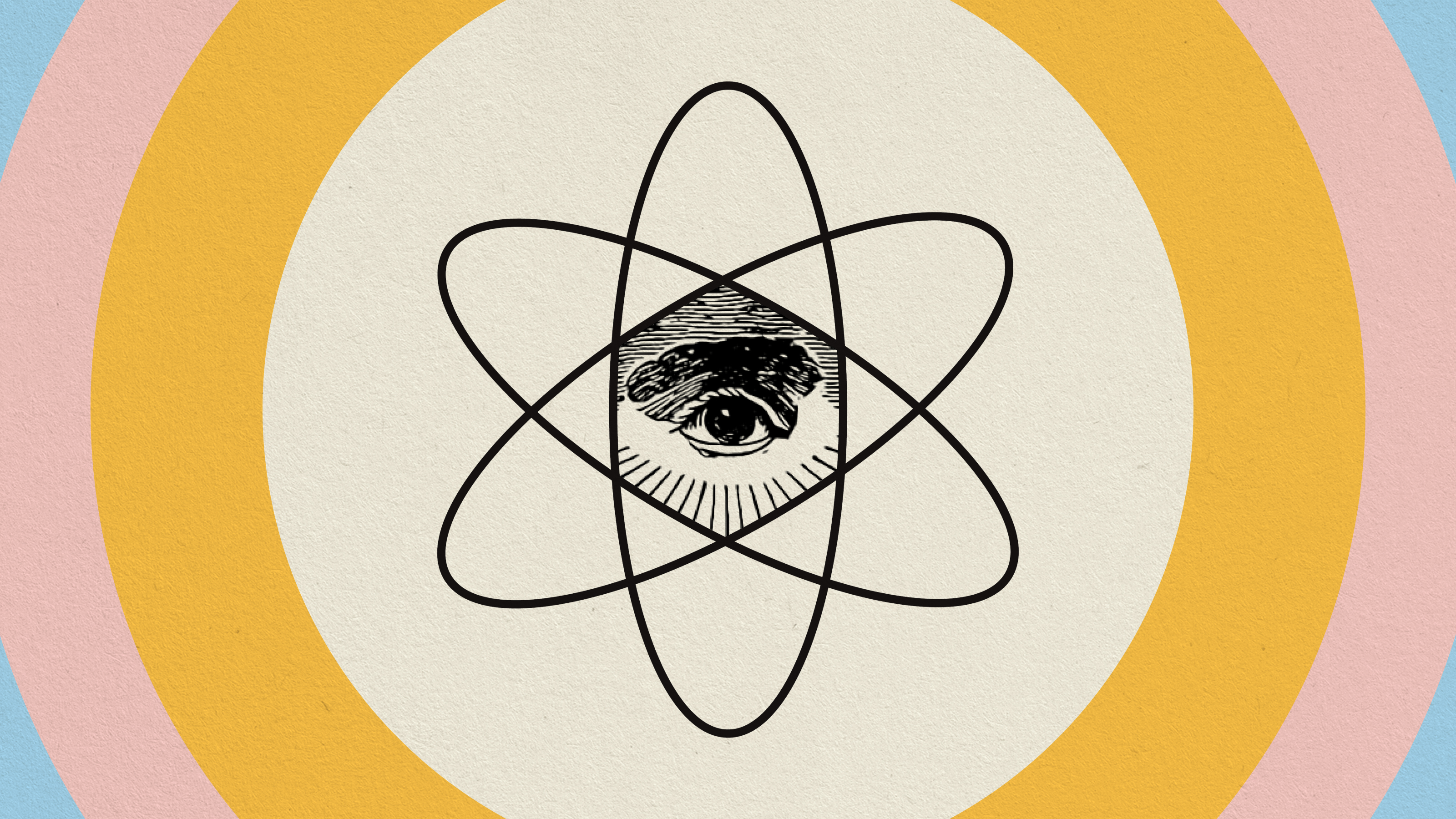On acceptance: Clichés vs. viscosity

EMILY KASK/AFP via Getty Images
It’s good to be able to accept what there is. And although one does not need to apply this skill always or without moderation, it is one of the most important exercises for the human spirit.
There is a playful summary of the history of philosophy – written, I think, by Leszek Kołakowski – where every philosopher is given one fourth of a sentence. “Aristotle: stick to the Middle state between, you will not die.” “Hegel: God has dissolved throughout the world because he had to.” “Thales: because, water.” And the Stoics? “Stoics: it is good the way it is.”
This principle is witty, accurate, and yet simultaneously problematic. Specifically, it is problematic precisely because it is accurate. Because stoicism (at least the ancient variety) really tries to convince us that what there is, is good. In other words (one could say, with irony, that philosophy itself is based on such word play), stoicism is the art of convincing oneself that the way things are is good.
‘It is good the way it is’. ‘Come to terms with it’. ‘Take life as it comes’. These phrases are wonderfully ambivalent, not in their meaning, but in the reflection they bring. On the one hand, they contain a profound, universal wisdom. It is no coincidence that the themes of ‘coming to terms’ and ‘acceptance’ appear in a wide variety of schools and traditions of thought – from Stoics and Buddhists to pantheists and practitioners of all kinds of modern-day mindfulness. Yes, this is the profound, fundamental truth about human life, one of its mysteries; one way to live on this Earth and not go mad. It’s good to be able to reconcile, and accept what there is. And although one does not need to apply this skill always and without moderation – and although it will not be useful for everyone – it is undoubtedly one of the most important exercises and perspectives for the human spirit.
On the other hand, it is, in essence, painfully banal. After all, what’s easier, more trivial, clichéd than saying: “You have to come to terms with what you cannot change”; “You have to accept the facts”; “You have to deal with what there is”. This truth has been explored through hundreds of generations, in thousands of languages. It is outdated, graphomaniac even. It is trivial not only because we’ve internalized this wisdom, we’ve profanated and McDonaldized it. It is also trivial in the sense that it is radically simple. The idea of ‘accepting things as they are’ is just so painfully simple. So simple, in fact, that it seems… empty. It is almost a tautology – there’s nothing to talk about here.
And if one cannot talk about it, it’s easy to sneer. The idea of ‘acceptance’, ‘reconciling with life’, is constantly and regularly ridiculed as a kind of ornament that looks impressive, but does not bring anything to the table and perhaps even makes things worse. Online projects such as “Zdelegalizować coaching i rozwój osobisty” [Outlaw coaching and personal development] and “Magazyn Porażka” [Failure Magazine] provide healthy but miserable ridicule. Sneering, which often develops into solid social critique. A concrete example: at the beginning of this year (and the new decade – after a few months, it still sounds good) the news that Starbucks refused their employees a pay increase and instead offered a meditation app was widely debated online. In short: we will not give you money, but a tool to come to terms with the fact that you have so little of it. The grating is obvious: something is not working here, something is disproportionate. The idea of ‘reconciling’ and ‘accepting the world as it is’, noble in its intention, is used here for an ugly, oppressive purpose.
We could say: Yes to acceptance, no to pathologies. And yet we have to be careful not to slip into the said cliché. One precaution might be – attention! I am about to take a leap, hopefully not salto mortale – to turn to Anselm from Canterbury and his proof of the existence of God. I do not mean the proof itself, but its status and context. This proof, today known as ontological evidence, was not invented (by a Christian bishop thinker in 11th-century Europe) in order to really persuade anyone. The point of proving God’s existence is not to convert anyone into a believer. The point – at least of Anselm’s proof – was to show that, beginning with our faith in God and travelling on the great and complicated paths of reason, we will finally arrive at the same faith from which we departed. Logical reasoning will confirm what is known through faith. The point of departure and arrival is trivial, if only because it is one and the same. All value lies in what we learn along the way.
And it is kind of similar with acceptance, reconciliation with life. Of course, this idea is trivial, radically simple, and because of this simplicity a bit graphomaniac. However, the secret lies in how we reach it. Entire volumes have already been written about these paths, and new ones are still being produced. I am still writing new ones myself, and if nothing bad happens along the way, they will land in bookstores sooner than the next issue of “Przekrój”.
Let’s take another leap now: from Anselm to… Sartre. Because it was Sartre who pointed out somewhere that we, humans, have a fundamental problem with objects and substances that drag, smudge, are sticky and are difficult to clean. This doesn’t really require an explanation, especially for those of you for whom the abbreviation OCD is not some mysterious acronym (I see you, brothers and sisters!). Favourite trousers stained with grease, shampoo spilled in the toiletries bag, dog shit on a fluffy carpet. Nobody likes that kind of thing.
Why am I even writing about it? Sartre – if I am not mistaken – draws attention to the deeper sense of our aversion to stickiness. We don’t like it, because it blurs the difference between us and the outside world. In everyday life, we feel this difference quite strongly. My ‘I’ ends somewhere on the border of my skin, body, clothes. External things are beyond me, they are not mine. And, to some extent, I recognize that they are not mine, that they are not with me, that if I want, I can get up, leave, and move away from them. The spatial dimension emphasizes this difference between an external object and me.
But viscosity negates this. If I sit on old chewing gum, I will not be able to clean it easily off of my trousers. I will not be able to separate myself from it easily; there won’t be a single pleasant moment of separation that will give me soothing confidence that me and the gum are separate. What is viscous is not only physically sticky – it also gets stuck to my ‘I’ and disturbs the pleasant awareness that my being is clearly defined and its boundaries are defined.
What does this have to do with anything? A lot! If ‘acceptance’ can indeed elude banality, it is not in objectively painful matters, but precisely in ambiguous, sticky ones. “Deal with the fact that you are mortal, with the loss that you will no longer fulfil your youthful dreams.” These are all difficult, sad issues – often tragic, sometimes unmanageable. What connects them, however, is that we know – at least in theory – what this state of arriving at them should look like; we know what it means to come to terms with death, separation or lost dreams. There are suitable prescriptions – perhaps bitter, but they are there.
However, are they still valid when things get sticky and ambiguous? That is the question! Death, loss, lost dreams – these are blows to the ‘I’, which (in principle) attack my ‘I’ from the outside. As long as the difference between ‘I’ and ‘not I’ is determined, I at least recognize the field of struggle. It is much harder when these differences begin to blur. Here, of course, I do not mean that the Stoic will find it harder to accept gum on his bottoms or grease on his shirt. I mean situations that ‘smudge’, ‘spill’, and ‘stick’ – and, as such, undermine the boundary between ‘I’ and the outside world.
The experience of parenthood, with its crumbling piles of dozens of items, bags and parcels that need to be dragged around the world with you and the baby. The experience of a difficult family relationship that we would have ended a long time ago if it was a stranger, which goes on and on, and doesn’t end because there is something of a life sentence about it. The experience of mental health problems or the nightmare of depression that does not attack me from the outside, but breaks down my ‘I’ from the inside. Such situations are the most difficult to accept, because the boundary between who is doing the accepting and what is to be accepted is rather blurred. Here, stoicism, but also more broadly, every maximalist philosophy that sees thing in black and white, finds a worthy challenge.
Translated from the Polish by Joanna Figiel
Reprinted with permission of Przekrój. Read the original article.





